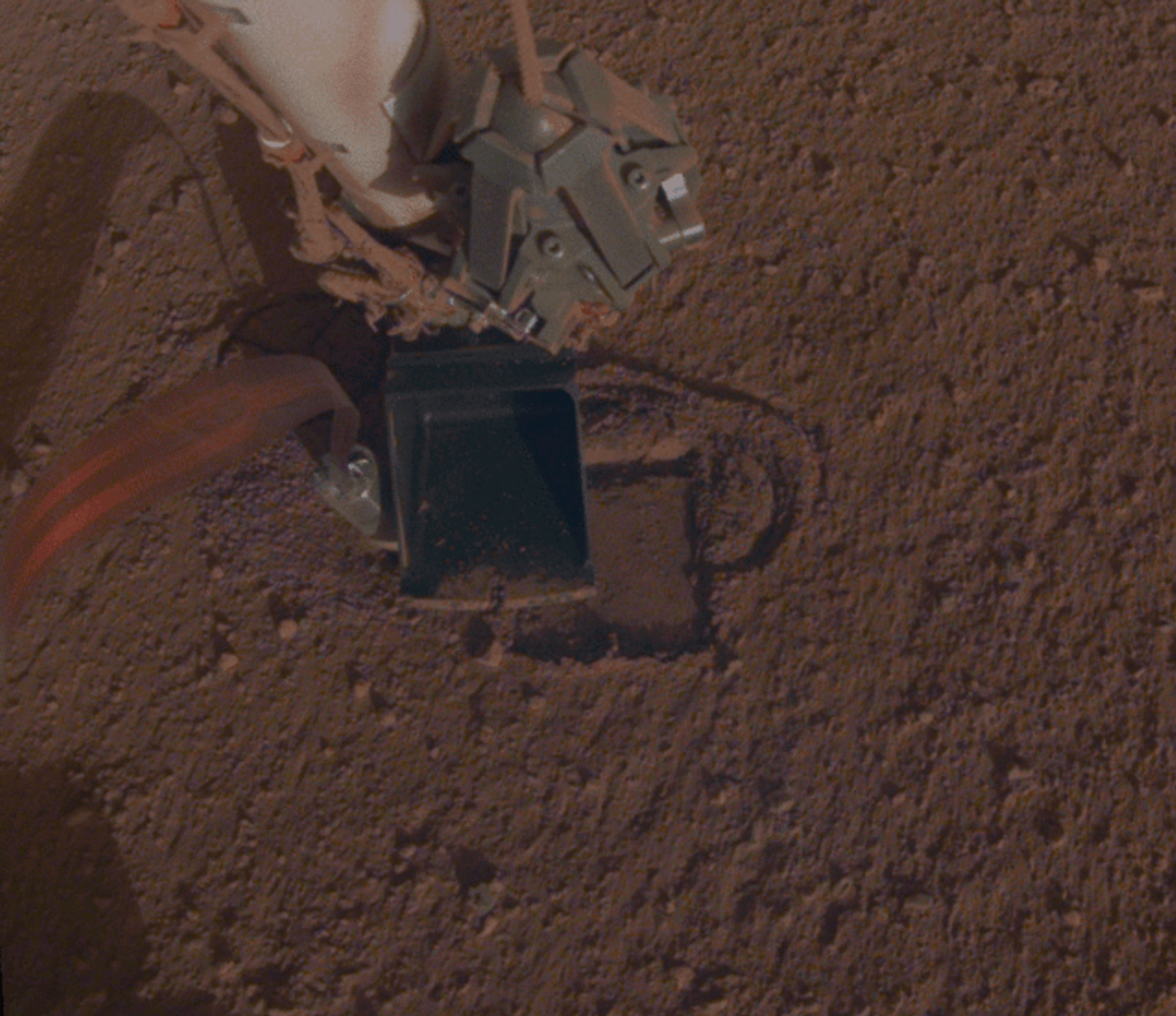InSight Lander's Stymied 'Mole' On the Move Again
NASA’s InSight mission touched down on the Martian surface just under a year ago and has since deployed a suite of scientific instruments to investigate the various internal mechanisms that make the red planet tick. But that’s not to say everything went according to plan…
Image Credit: NASA/JPL-Caltech
InSight’s Heat Flow package, an instrument that NASA likes to refer to as the ‘Mole,’ was expected to dig 16 feet below the planet’s surface in search of temperature fluctuations that could indicate an internal heat source. Unfortunately, the Mole encountered unforeseen technical difficulties during its descent, striking resistance beneath the planet’s surface. It was effectively stymied, compelling mission scientists to find a solution here on Earth.
It’s been a while since the Mole initially got stuck, but it now seems that there could be a light at the end of this dark and dreary tunnel. In a statement released by NASA just this week, the American space agency revealed how mission scientists successfully helped the mole’s descent progress by another two centimeters – keep in mind that the Mole had already excavated 75% of the way before getting stuck.
"Seeing the mole's progress seems to indicate that there's no rock blocking our path," commented Tilman Spohn, the principal investigator of the Heat Flow and Physical Properties Package that shipped with InSight.
Related: NASA's InSight mission detects the first likely marsquake yet
While performing tests with a replica here on Earth, mission scientists purportedly found that the Martian soil that the Mole was attempting to dig through was ‘stronger’ than initially thought. In short, this means that the Mole’s designed method of digging wouldn’t be effective and that it would necessitate aid in the form of downward pressure to get itself moving again.
To achieve this, NASA commanded the InSight lander to maintain continuous pressure on the Mole with the scoop on the lander’s robotic arm as it attempted to dig. This positive pressure, a method referred to by NASA as ‘pinning,’ maintains enough friction for the Mole to break through the tougher soil underneath it, which it struggled to do in the first place.
The pressure isn’t downward, however. Instead, it’s lateral. NASA wants to create friction for the Mole so that its designed digging technique will work. Pushing down directly on the top of the Mole could potentially damage sensitive electrical connections, and while it would help the mole dig deeper, NASA is saving this method for an absolute worst-case scenario if all else fails.
"The mole still has a way to go, but we're all thrilled to see it digging again," added JPL engineer and scientist Troy Hudson. "When we first encountered this problem, it was crushing. But I thought, 'Maybe there's a chance; let's keep pressing on.' And right now, I'm feeling giddy."
Related: How is the InSight mission going so far?
It should now be interesting to learn whether the Mole will reach its expected 16-foot depth. After all, some of the most important Martian science of the decade may depend on getting this probe where it needs to be.
Source: NASA









